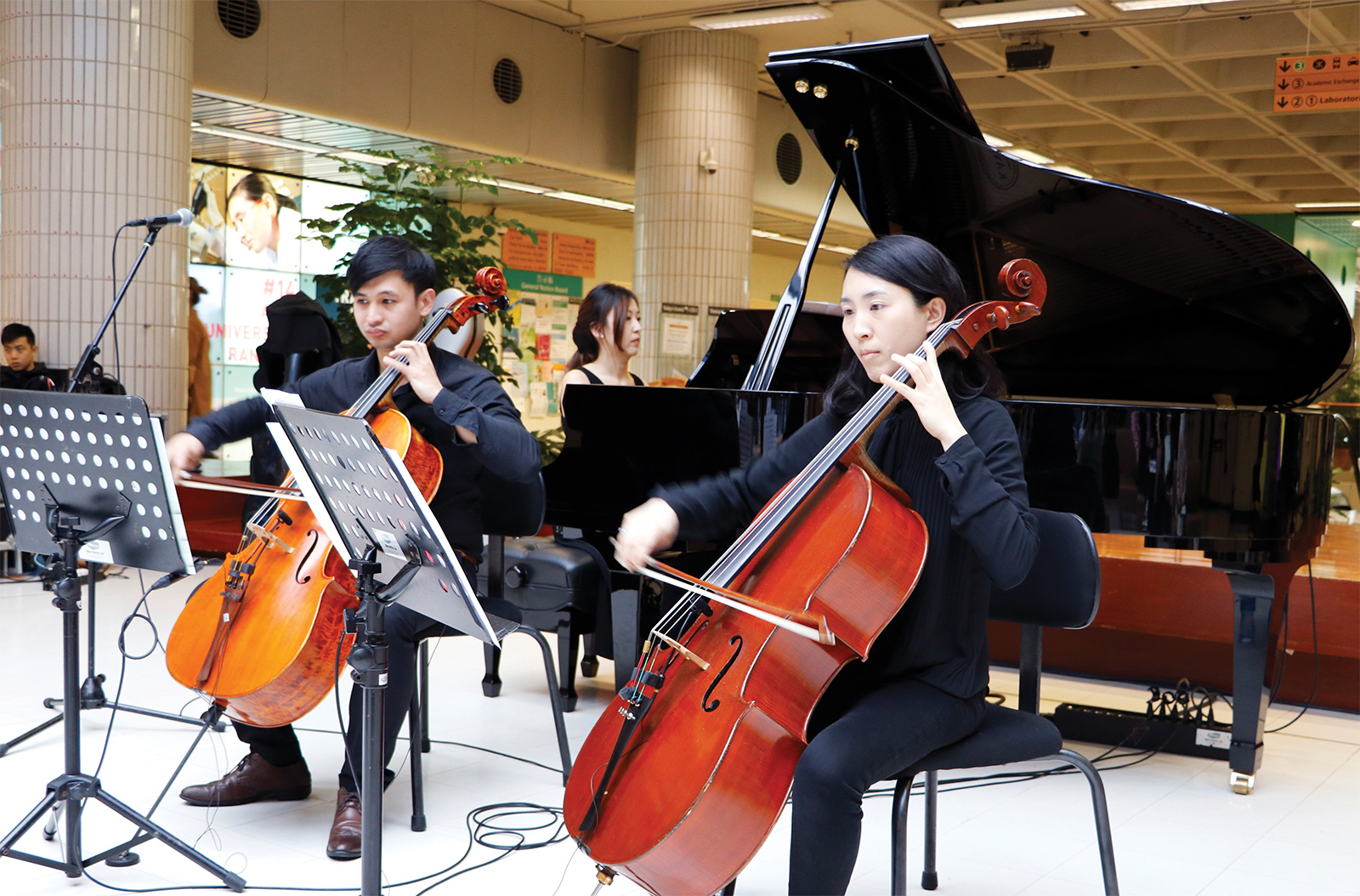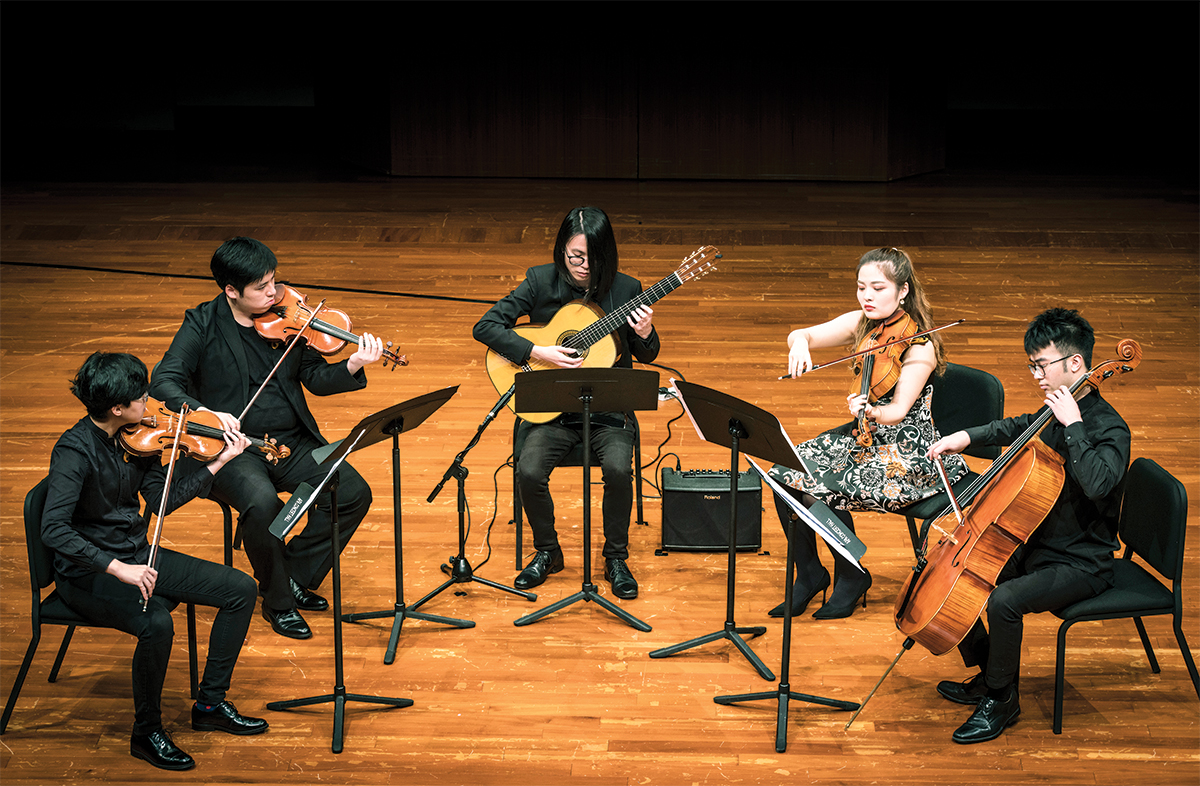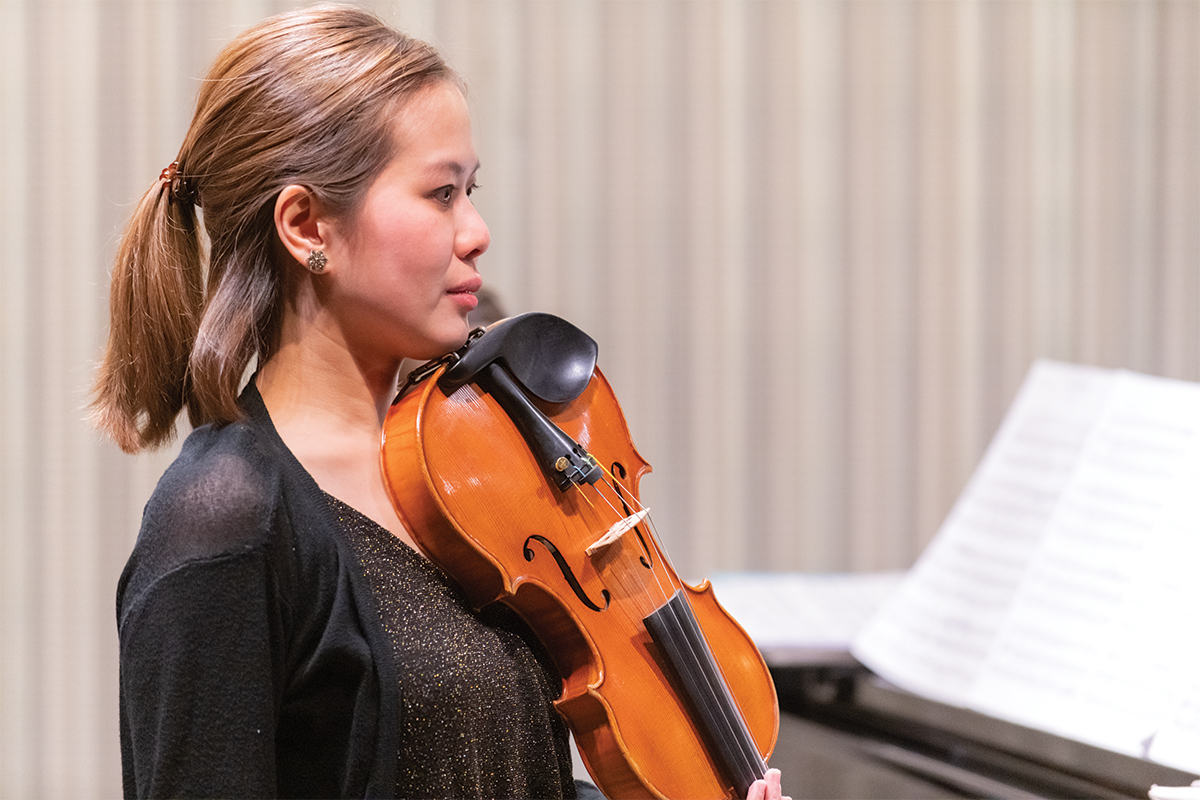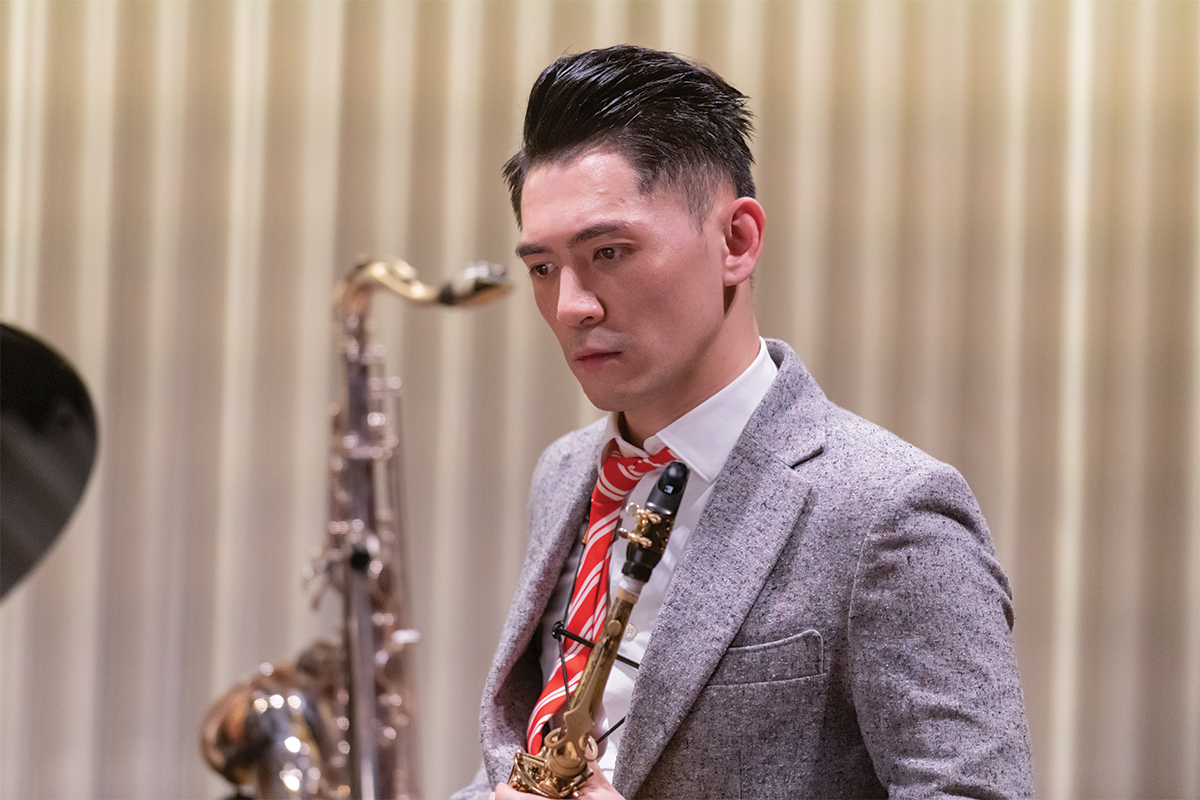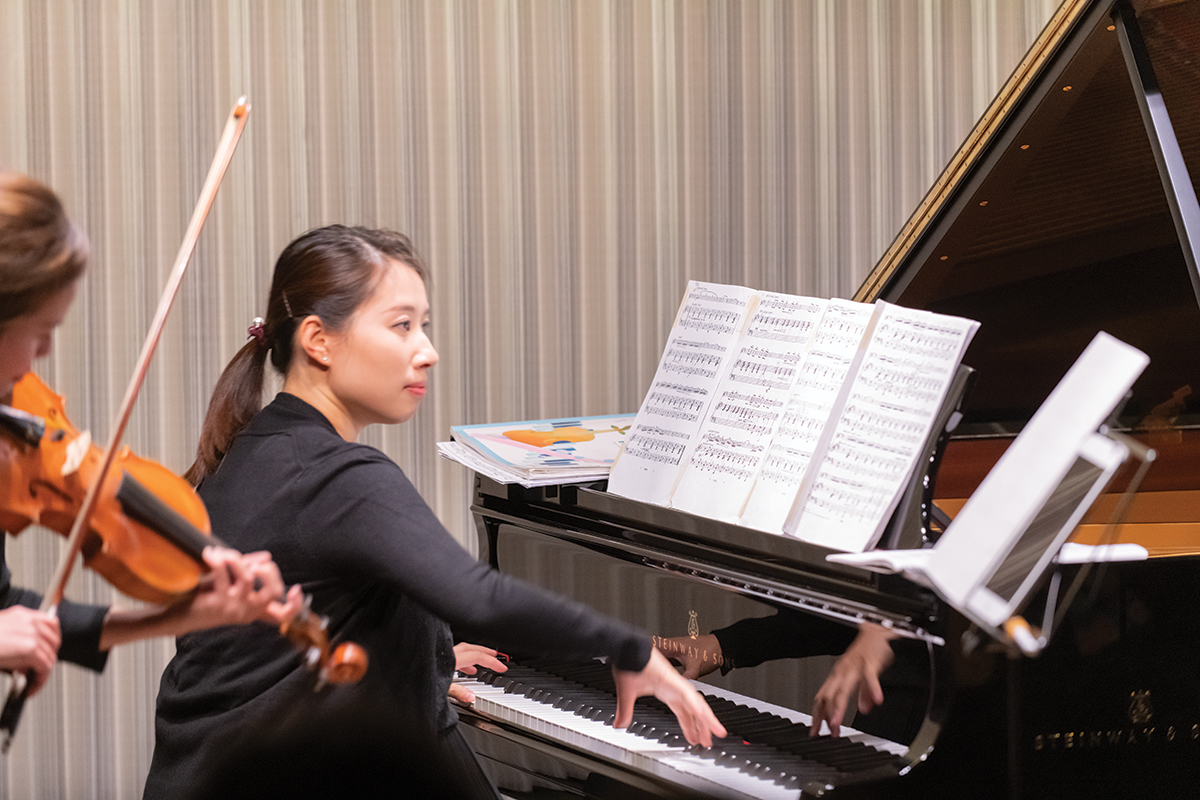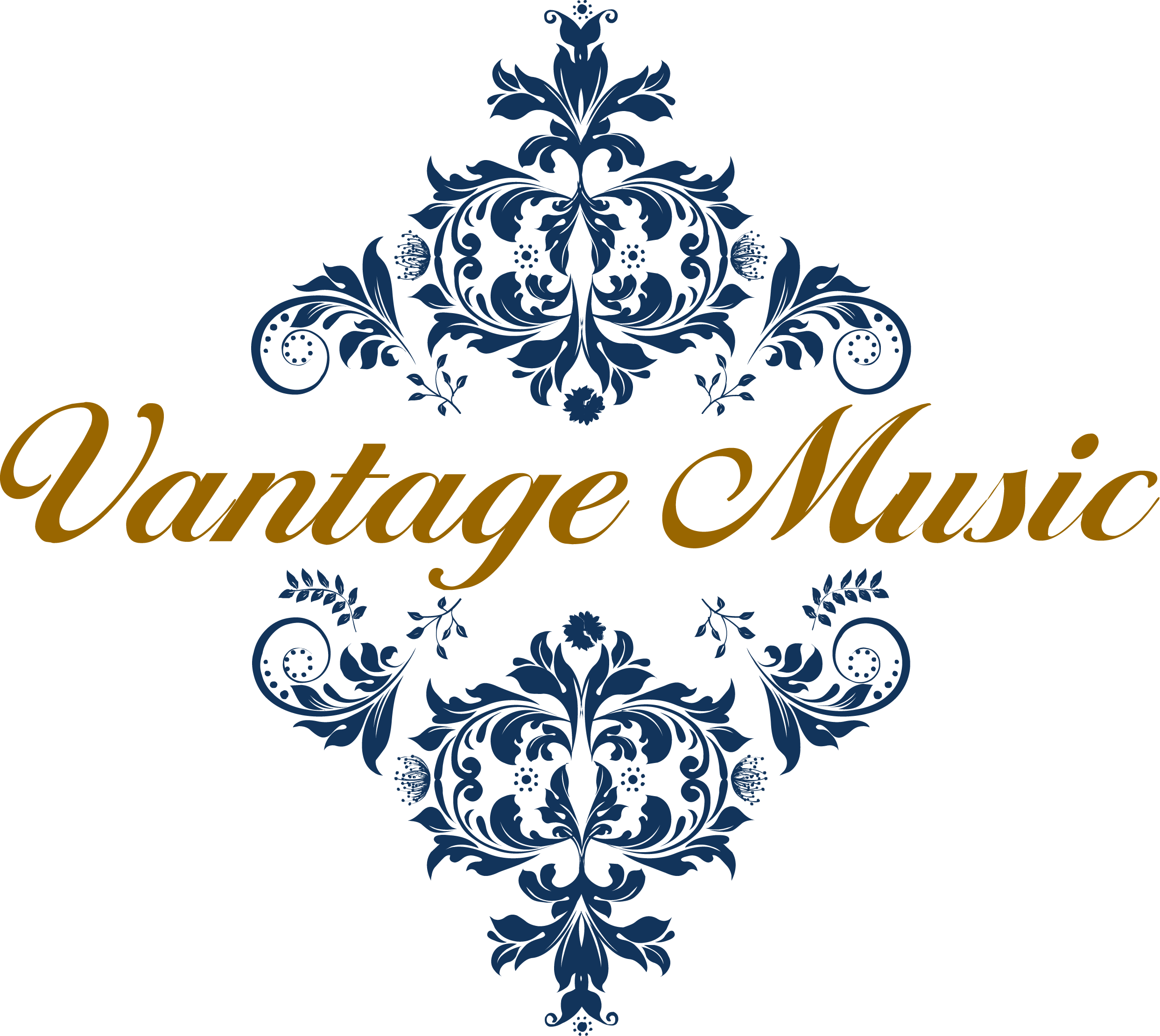Vantage | Volume 4 | Number 3
In this occasion, US-based cellist Cara Cheung, cellist Eric Yip and pianist Zenan Kwan joined together to perform a delicately-crafted programme. It began with Vivaldi’s Concerto for two cellos in G minor, RV 531, one of the earliest well-known works written for two cello soloists playing with other strings and a continuo setting, which were altogether replaced by the piano here.
The second piece was a two-cello transcription by Werner Thomas-Mifune which was originally a solo violin variation by Paganini. Here, each of the cello showcased their abilities for seamless co-operation, taking turns to lead the melody and to accompany without the piano.
Following that, the two cello solo pieces, Cassado’s Requiebros and Castelnuovo-Tedesco’s variations on Rossini’s ‘Figaro’ from the Barber of Seville brought the concert to a climax. A cello student of Pablo Casals, Cassado also studied composition with Maurice Ravel in Paris. Requiebros, meaning amorous compliments in English, fused Spanish folk tunes with Impressionism, with the two instruments expressing the mutual admiration of two lovers. Castelnuovo-Tedesco used to collaborate frequently with great masters like Heifetz and Piatigorsky and often arranged pieces for them. For this particular work, the virtuosic exchange between the cello and the piano was a challenge for even the finest musicians.
Aaron Minsky is one of Mr. Yip’s favourite composers and the audience had the opportunity to listen to one of his less-frequently performed and yet wonderful work. The native American blues tunes also made a very interesting contrast to the first two baroque and classical period pieces.
The concert concluded with Shostakovich’s Five Pieces for two violins and piano whereby each of the two cellists arranged a few pieces into their corresponding cello versions. A true teamwork spirit manifested throughout this wonderful event not only on stage but also offstage.
A double celebratory concert – the twelfth anniversary concert celebration of Contrast Trio (Kitty Cheung, violin, Timothy Sun, saxophone, and Jenny Ng, piano) and the opening of the new S’way Music Studio in Hong Kong. The Studio is well-equipped and remarkably appealing to chamber music events.
The concert itself was cozy, merry, pleasant and yet sentimental, especially when the trio members recounted the days when the group was started in London. Many pieces had to be rearranged for the particular instrumental combination of violin, saxophone and piano. Because of this, the genres of the performed pieces were diverse, comprising transcriptions of standard classical repertoire, tango, Jazz, and even animation’s soundtracks.
In this concert featuring guitarist Mr. Mario To, the audience was treated to a rare selection of sonorities, including guitar with string quartet, guitar with clarinet, and guitar with flute. The flexibility shown by Mr. To in managing to work with such vastly contrasting set-ups was remarkable, even more so when considering the fact that he is still a student of the Academy for Performing Arts.
Of these different combinations, this present writer felt it was the guitar-clarinet piece (Jan Freidlin’s Kafka Sonata) that worked most wonders. The music was written in the modern style, and on paper should be full of dissonances, yet somehow those dissonant harmonies and angular melodies came across as quietly pleasing. It was actually a mental challenge for this writer to consider that piece of music as dissonant. Perhaps it has something to do with the nature of the guitar’s sonority, with its ability to give out the purest of tones, and with the clarinettist Ms. Stephanie Ng weaving around the guitar in roughly the same register, we hear not as harmonies or melodies but simply a most charming tone colour combined.
With the guitar and the flute in Piazolla’s Histoire du Tango, the roles of the instruments were more clearly defined as accompaniment and melody, and so we became more aware of the gap between the registers of the two instruments. Perhaps this combination would have worked better in a non-concert-hall-setting. The string quartet pieces worked well, with the guitar being aided by an amplifier. Mario Castelnuovo-Tedesco’s Quintet for Guitar and String Quartet in particular had some very challenging writing, which was brought off with incredible flair and passion.
